Prevent Cilantro Bolting Naturally and enjoy fresh, flavorful cilantro all season long! Are you tired of your cilantro plants suddenly shooting up flower stalks and turning bitter before you’ve even had a chance to make a decent batch of salsa? I know I was! It’s a common frustration for home gardeners, especially as the weather warms up. But don’t despair, because I’m here to share some simple, effective DIY tricks to keep your cilantro happy and productive.
Cilantro, also known as coriander (the seeds), has a rich history, dating back to ancient Egypt and even mentioned in the Bible. For centuries, it’s been prized for its culinary and medicinal properties. But its tendency to bolt – that is, prematurely flower and go to seed – can be a real headache for us modern gardeners.
Why is preventing cilantro bolting so important? Well, bolting not only changes the flavor of the leaves, making them bitter and unpalatable, but it also signals the end of your cilantro harvest. By implementing these easy DIY hacks, you can extend your cilantro’s lifespan, ensuring a continuous supply of fresh herbs for your favorite dishes. Plus, who doesn’t love a good gardening challenge? Let’s dive in and discover how to prevent cilantro bolting naturally and keep those delicious leaves coming!
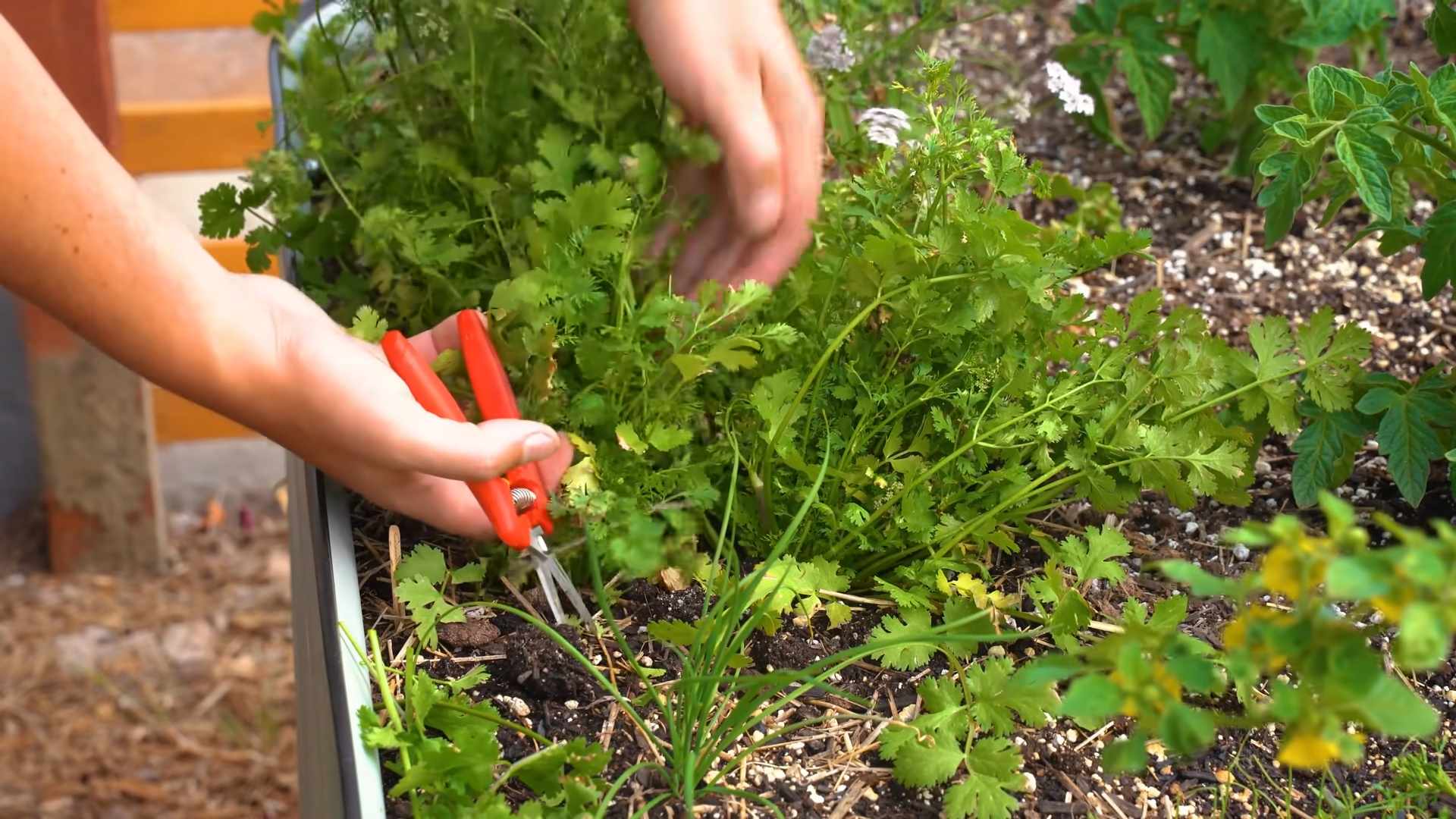
Prevent Cilantro Bolting: A Gardener’s Guide to Keeping Your Cilantro Fresh
Cilantro, that vibrant, flavorful herb, can be a real pain when it decides to bolt – that is, shoot up a flower stalk and turn bitter. It’s a common problem, especially in warmer weather, but don’t despair! I’ve learned a few tricks over the years to keep my cilantro happy and producing those delicious leaves for longer. Let’s dive into how you can prevent cilantro bolting naturally.
Understanding Why Cilantro Bolts
Before we get into the “how,” let’s quickly understand the “why.” Cilantro is a cool-season herb, and bolting is its natural response to stress. This stress can come from:
* High Temperatures: Cilantro thrives in cooler weather. When temperatures rise, it thinks its time to reproduce and sets seed.
* Long Days: Longer daylight hours signal to the plant that summer is coming, triggering the bolting process.
* Lack of Water: Drought stress can also cause premature bolting.
* Poor Soil: Nutrient deficiencies can weaken the plant and make it more susceptible to bolting.
Knowing these triggers helps us tailor our approach to prevent bolting.
Choosing the Right Cilantro Variety
Believe it or not, some cilantro varieties are more bolt-resistant than others. I’ve had good luck with these:
* Slow Bolt: As the name suggests, this variety is specifically bred to resist bolting.
* Santo: Another popular choice known for its slower bolting tendencies.
* Calypso: A heat-tolerant variety that holds up well in warmer climates.
Choosing one of these varieties is a great first step in preventing bolting.
Planting Strategies for Bolting Prevention
How and when you plant your cilantro can significantly impact its bolting behavior.
Succession Planting
This is my go-to method for ensuring a continuous supply of cilantro.
1. Start Seeds Indoors (Optional): I like to start my cilantro seeds indoors about 4-6 weeks before the last expected frost. This gives them a head start. Use biodegradable pots to minimize root disturbance when transplanting.
2. Direct Sow Seeds: Cilantro can also be directly sown into the garden. Sow seeds about ¼ inch deep and 1 inch apart.
3. Stagger Plantings: Sow a new batch of seeds every 2-3 weeks. This way, you’ll always have young, productive plants coming up as older ones start to bolt.
4. Choose the Right Time: Plant cilantro in early spring or late summer/early fall for the best results. Avoid planting during the hottest part of the summer.
Location, Location, Location
Where you plant your cilantro matters!
1. Partial Shade: Cilantro prefers partial shade, especially during the hottest part of the day. If you live in a hot climate, plant it in a location that receives morning sun and afternoon shade.
2. Well-Drained Soil: Cilantro needs well-drained soil to prevent root rot. Amend heavy clay soil with compost or other organic matter.
3. Avoid Windy Areas: Strong winds can dry out the soil and stress the plants, leading to bolting.
Watering and Feeding for Healthy Cilantro
Proper watering and feeding are crucial for keeping your cilantro healthy and preventing bolting.
Consistent Watering
1. Water Regularly: Keep the soil consistently moist, but not waterlogged. Water deeply whenever the top inch of soil feels dry.
2. Avoid Overwatering: Overwatering can lead to root rot, which weakens the plant and makes it more susceptible to bolting.
3. Water in the Morning: Water in the morning to allow the foliage to dry before nightfall, reducing the risk of fungal diseases.
Fertilizing Your Cilantro
1. Use a Balanced Fertilizer: Feed your cilantro with a balanced fertilizer (e.g., 10-10-10) every few weeks.
2. Organic Options: I prefer using organic fertilizers like compost tea or fish emulsion. These provide essential nutrients without harsh chemicals.
3. Avoid Over-Fertilizing: Too much nitrogen can promote leafy growth at the expense of flavor and can also contribute to bolting.
Mulching and Weed Control
Mulching and weed control are essential for maintaining healthy cilantro plants.
Mulching
1. Apply Mulch: Apply a layer of organic mulch, such as straw or wood chips, around the base of the plants.
2. Benefits of Mulch: Mulch helps to retain moisture, suppress weeds, and regulate soil temperature, all of which can help prevent bolting.
Weed Control
1. Remove Weeds Regularly: Weeds compete with cilantro for water and nutrients, stressing the plants and increasing the likelihood of bolting.
2. Hand-Pull Weeds: Gently hand-pull weeds to avoid disturbing the cilantro roots.
3. Avoid Herbicides: I avoid using herbicides in my garden, as they can harm beneficial insects and contaminate the soil.
Harvesting Techniques to Delay Bolting
How you harvest your cilantro can also influence its bolting behavior.
Regular Harvesting
1. Harvest Frequently: Harvest cilantro leaves regularly, starting when the plants are about 6 inches tall.
2. Pinch Off Flower Buds: As soon as you see flower buds forming, pinch them off. This will encourage the plant to produce more leaves instead of flowers.
3. Cut Outer Leaves: When harvesting, cut the outer leaves first, leaving the inner leaves to continue growing.
4. Avoid Over-Harvesting: Don’t harvest more than one-third of the plant at a time, as this can stress the plant and promote bolting.
Shade Cloth for Hot Weather
When the weather gets really hot, shade cloth can be a lifesaver for your cilantro.
1. Install Shade Cloth: Install shade cloth over your cilantro plants to reduce the amount of direct sunlight they receive.
2. Choose the Right Shade Percentage: A shade cloth with a 30-50% shade rating is usually sufficient.
3. Monitor Temperature: Check the temperature under the shade cloth to ensure it’s not getting too hot.
Dealing with Bolted Cilantro
Even with the best efforts, cilantro may still bolt. Don’t worry; it’s not the end of the world!
Letting it Flower
1. Allow Some to Flower: Let a few plants flower and go to seed. Cilantro flowers attract beneficial insects to your garden.
2. Collect Seeds: Once the seeds are dry, collect them and store them in a cool, dry place for planting next season.
Using the Seeds
1. Coriander: Cilantro seeds are known as coriander. You can use them in cooking as a spice.
2. Grind or Use Whole: Grind the seeds for a more intense flavor, or use them whole in stews and curries.
Composting Bolted Plants
1. Compost the Rest: Compost the remaining bolted plants. They’ll add valuable nutrients to your compost pile.
2. Avoid Spreading Seeds: If you don’t want cilantro to self-seed, remove the flower heads before composting.
Troubleshooting Common Cilantro Problems
Here are a few common problems you might encounter with cilantro and how to address them:
* Yellowing Leaves: This can be caused by overwatering, nutrient deficiencies, or fungal diseases. Adjust your watering schedule, fertilize the plants, and ensure good air circulation.
* Stunted Growth: This can be caused by poor soil, lack of sunlight, or pest infestations. Amend the soil with compost, move the plants to a sunnier location, and inspect them for pests.
* Pests: Aphids and spider mites can sometimes attack cilantro. Spray the plants with insecticidal soap or neem oil to control these pests.
My Personal Tips and Tricks
Over the years, I’ve picked up a few extra tips that have helped me keep my cilantro happy and productive:
* Companion Planting: Plant cilantro near tomatoes, peppers, and carrots. These plants can help protect cilantro from pests and improve its growth.
* Watering with Compost Tea: I love watering my cilantro with compost tea. It provides essential nutrients and helps to improve soil health.
* Regular Monitoring: Check your cilantro plants regularly for signs of stress or disease. The sooner you catch a problem, the easier it will be to fix.
By following these tips and tricks, you can significantly reduce the chances of your cilantro bolting and enjoy a continuous supply of fresh, flavorful leaves throughout the growing season. Happy gardening!
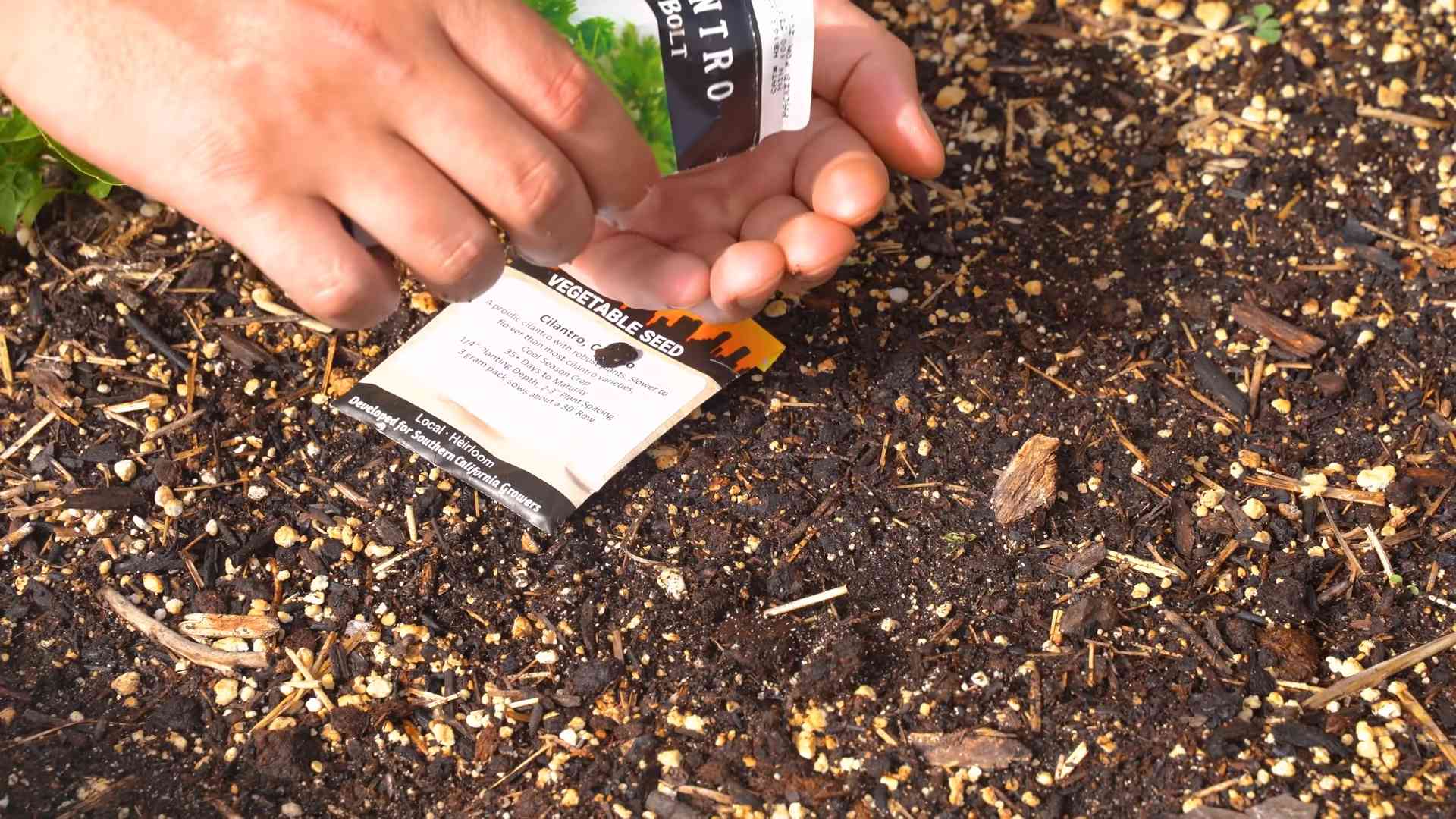
Conclusion
So, there you have it! Preventing cilantro bolting naturally isn’t some impossible feat reserved for seasoned gardeners. It’s a series of simple, actionable steps that, when combined, can dramatically extend the life of your cilantro and keep those flavorful leaves coming. We’ve explored everything from strategic planting times and shade provision to consistent watering and the importance of snipping those early flower buds.
Why is this DIY trick a must-try? Because fresh cilantro is a culinary game-changer. Store-bought cilantro often lacks the vibrant flavor and aroma of homegrown, and let’s be honest, it can be expensive! By mastering these techniques, you’re not just saving money; you’re ensuring a constant supply of fresh, flavorful cilantro to elevate your favorite dishes. Think of the possibilities: vibrant salsas, fragrant curries, zesty tacos, and so much more, all enhanced by the taste of your own homegrown cilantro.
But the benefits extend beyond just the kitchen. Gardening is therapeutic. Nurturing a plant from seed to harvest is incredibly rewarding, and knowing you’ve successfully navigated a common gardening challenge like bolting adds a real sense of accomplishment. Plus, you’re contributing to a more sustainable lifestyle by growing your own herbs and reducing your reliance on store-bought produce.
Variations and Suggestions:
* Succession Planting: Plant new cilantro seeds every 2-3 weeks for a continuous harvest. Even if some plants bolt, you’ll always have fresh cilantro coming up.
* Container Gardening: If you’re short on space, grow cilantro in containers. This makes it easier to move the plants to shadier locations as needed. Consider using a self-watering container to ensure consistent moisture.
* Companion Planting: Plant cilantro near other herbs and vegetables that benefit from its presence. For example, cilantro can attract beneficial insects that prey on pests that might harm other plants.
* Bolted Cilantro Uses: Don’t despair if your cilantro does bolt! The seeds (coriander) are a valuable spice. Let the plant flower and collect the seeds once they turn brown. You can also use the flowers as a garnish or attract beneficial insects to your garden.
* Soil Amendments: Incorporate compost or other organic matter into the soil before planting to improve drainage and nutrient availability. A well-draining soil is crucial for healthy cilantro growth.
We truly believe that anyone can successfully prevent cilantro bolting naturally with a little knowledge and effort. It’s a rewarding experience that will enhance your cooking and your connection to nature.
So, what are you waiting for? Grab some cilantro seeds, follow these tips, and get ready to enjoy a bountiful harvest of fresh, flavorful cilantro. We’re confident that you’ll be amazed at the results.
We’d love to hear about your experiences! Share your tips, successes, and even your challenges in the comments below. Let’s learn from each other and create a community of cilantro-growing experts! Don’t forget to tag us in your photos on social media using #HomegrownCilantro. Happy gardening!
Frequently Asked Questions (FAQ)
Why does cilantro bolt so easily?
Cilantro is a cool-season annual, meaning it naturally prefers cooler temperatures and has a relatively short lifespan. Bolting, or premature flowering, is its way of trying to reproduce before the heat of summer arrives. When temperatures rise, or when the plant experiences stress (like inconsistent watering), it triggers the bolting process. The plant shifts its energy from producing leaves to producing flowers and seeds, resulting in a decline in leaf quality and flavor.
How do I know if my cilantro is about to bolt?
There are several telltale signs that your cilantro is preparing to bolt. Look for these indicators:
* Rapid upward growth: The plant will start to stretch upwards quickly, becoming taller and leggier.
* Development of a central stalk: A thick stalk will emerge from the center of the plant, which will eventually produce flower buds.
* Change in leaf shape: The leaves may become smaller, more feathery, and less flavorful.
* Bitter taste: The leaves will develop a bitter taste as the plant focuses its energy on flower production.
If you notice any of these signs, take immediate action to try and slow down the bolting process.
What is the best time of year to plant cilantro to prevent bolting?
The best time to plant cilantro depends on your climate. In general, you should plant it in early spring or late summer/early fall, when temperatures are cooler. Avoid planting cilantro during the hottest months of summer, as this will almost certainly lead to bolting. In warmer climates, you may be able to grow cilantro throughout the winter.
How much sun does cilantro need?
While cilantro needs sunlight to grow, too much direct sun can actually contribute to bolting. Ideally, cilantro should receive about 4-6 hours of sunlight per day. In hotter climates, providing some afternoon shade can help prevent bolting. You can achieve this by planting cilantro in a location that receives partial shade or by using shade cloth.
How often should I water cilantro?
Consistent watering is crucial for preventing bolting. Cilantro prefers moist, but not waterlogged, soil. Water deeply whenever the top inch of soil feels dry to the touch. Avoid letting the soil dry out completely, as this can stress the plant and trigger bolting. Using mulch around the base of the plant can help retain moisture in the soil.
Does pruning or harvesting cilantro help prevent bolting?
Yes, regular pruning and harvesting can help delay bolting. When you harvest cilantro, cut the stems just above a leaf node. This encourages the plant to produce new growth and can help prevent it from focusing on flower production. Remove any flower buds as soon as you see them to redirect the plant’s energy back into leaf production.
Can I use fertilizer to prevent cilantro bolting?
While fertilizer isn’t a direct solution to prevent bolting, providing your cilantro with adequate nutrients can help it grow strong and healthy, making it more resilient to stress. Use a balanced fertilizer or compost tea to feed your cilantro every few weeks. Avoid over-fertilizing, as this can actually promote bolting.
What if my cilantro bolts anyway? Is it still usable?
Even if your cilantro bolts, it’s not a complete loss! As mentioned earlier, you can harvest the seeds (coriander) for use as a spice. The flowers are also edible and can be used as a garnish. While the leaves may become bitter, you can still use them in small amounts in dishes where the flavor will be masked by other ingredients.
Can I save seeds from bolted cilantro to plant next year?
Yes, you can save seeds from bolted cilantro to plant next year. Allow the flowers to dry completely on the plant, then harvest the seeds once they turn brown. Store the seeds in a cool, dry place until you’re ready to plant them. Keep in mind that cilantro seeds have a relatively short shelf life, so it’s best to use them within a year or two.
Are there any cilantro varieties that are more bolt-resistant?
Yes, some cilantro varieties are known to be more bolt-resistant than others. Look for varieties like ‘Slow Bolt’, ‘Santo’, or ‘Long Standing’. These varieties have been bred to withstand warmer temperatures and are less likely to bolt prematurely. However, even bolt-resistant varieties will eventually bolt if exposed to extreme heat or stress.

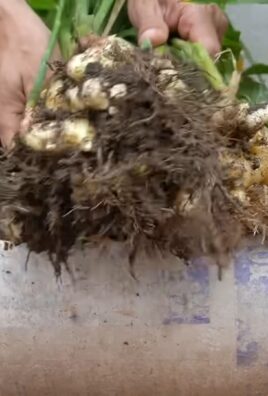
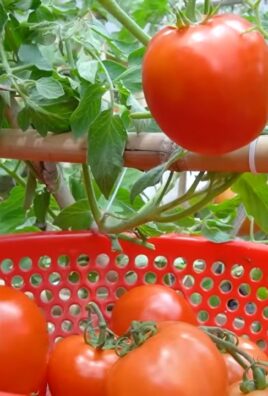
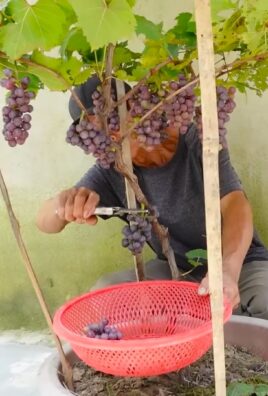
Leave a Comment